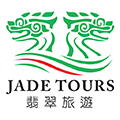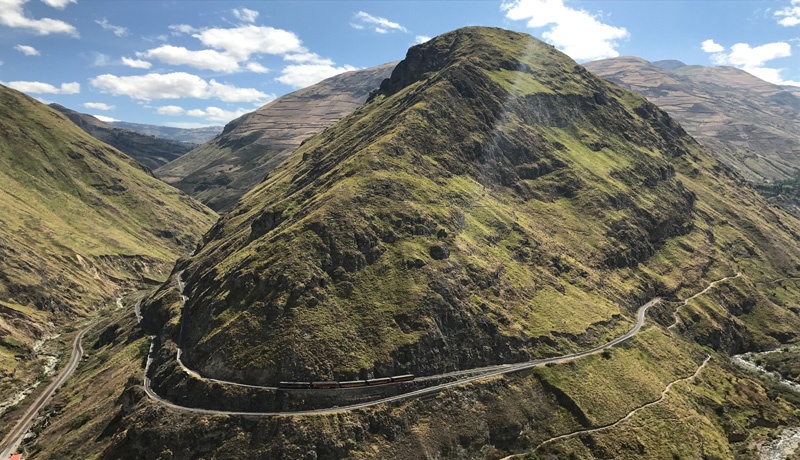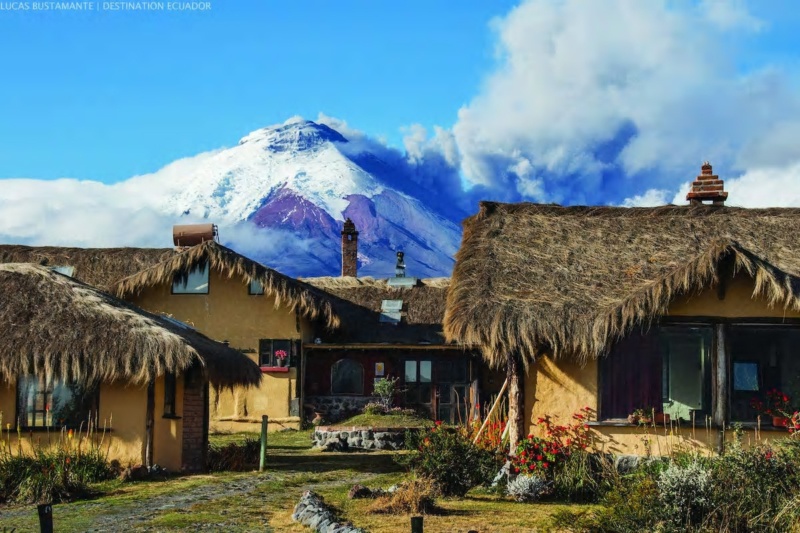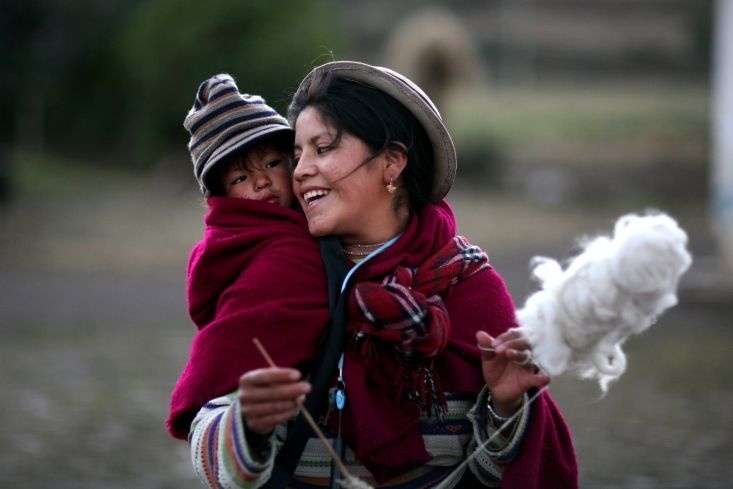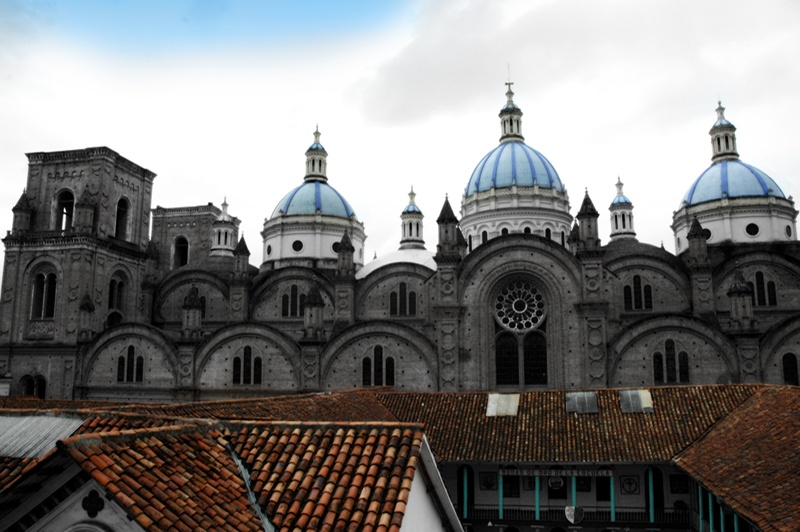Project Description
PRICE AND DATE
| Departure | Twin |
|---|---|
| Jan – Dec | $2,380 |
Prices are per person in Canadian dollars based on 4 people traveling together on double occupancy, including accommodations, most of the meals, train ticket, some excursions, car rental with CDW, GPS, WIFI dongle and admissions. Prices exclude all flights, gratuities and surcharges (peak, weekend, taxes). Prices are subject to change without prior notice. Free cancellation till 15 days prior to departure.
ITINERARY
Day 1 Arrive Quito – Cotopaxi B
You’ll be accompanied from the airport, or from your hotel in Quito to register your Hertz rental at the airport office and then pick up your car from the nearby Hertz Agency. Our English speaking agent will help familiarize you with your car and its coded electronic key, and set up the GPS and Wifi.
From the airport you’ll drive south towards the Cotopaxi area via the town of Sangolqui, with an optional stop at the Pita River. Starting from the Municipal Water Company’s parking area, the hike to the Pita River waterfall and back will take around two hours
The walk is easy and you’ll see energizing waterfalls, lots of birds and endemic plants, it´s also suitable for children.
Hiking time: 2 Hours
Difficulty: Easy, although the narrow path through the valley is uneven in places.
Type of terrain: Grassland;
If time permits, try some of the easy self-guided walks around the property. The views are wonderful, there’s no other word for it.
Hotel: Chilcabamba Lodge or similar
Day 2 Cotopaxi – Chugchilan B,D
When you leave Chilcabamba Lodge, drive to the northern entrance of Cotopaxi National Park. (Hours: 08:00 – 15:00)
Once inside the Park your first stop could be Limpiopungo Lake, where you can walk along the shore and look at the many aquatic birds that live here. If you feel like driving even higher, stop at the car park at the end of the road and from there you can climb a steep, winding and rocky road which leads to the mountain refuge, located on the snow line at 4,800m. But take care, you’re probably not used to the high altitude and may find it difficult to make it all the way around; it’s about an hour’s walk from the car. But if you decide not to make the climb, don’t worry, the views from the car park are also truly spectacular. At the Interpretation Centre you’ll get an idea of the history of this truly magnificent volcano and its major eruptions.
When you leave, take the road leading to the northern exit and follow the signs for Tambopaxi Lodge, where we recommend you have lunch.
From there you’ll continue your drive to the charming little town of Chugchilan. You will stay in a homely and tranquil traditional style Andean hotel tonight.
Hotel: Mama Hilda or similar
Day 3 Chugchilan – Quilotoa – Banos B
Make sure you are on the road early; you have 3 hours of breath-taking scenery ahead as you drive to the Quilotoa area.
When you get to the Shalala viewpoint you’ll see the enormous Quilotoa volcanic crater with its serene green and turquoise lake. Once you’re here you’ve got the option of a short walk (1.7km) along the crater’s rim.
After leaving Quilotoa you’ll have a relatively long drive south to the attractive town of Baños; it will take about 3hrs. Baños is named after the thermal baths that draw thousands of visitors annually, and is also known for the adrenaline-pumping adventure activities available in the area. The town is sleepy during the week, but comes to life at weekends, with local pilgrims, families and adventure sports enthusiasts. Baños sits in the shadow of the impressive Tungarahua volcano and is surrounded steep lush green hills. Your hotel is just at the entrance to the town as you approach from the South.
Hotel: Samari Spa Hotel or similar
Day 4 Banos B
A day at Leisure. Here’s some things you can do:
Casa del Arbol swing: The most popular activity in Baños is a swing on a nearby hilltop, where you launch yourself out over a steep slope, with views over the town of Baños down in the valley. You might prefer just to look: we haven’t tested this out ourselves.
The church of Our Lady of the Holy Waters: The church is in the central Plaza. Inside you’ll see a collection of murals that illustrate local miracles that have been attributed to the Virgin.
The Waterfall of the Virgin : The waterfall of the Virgin is the only one in Ecuador located within an urban area; it can be observed from any point of the city.
The Bride’s Veil Waterfall : If you like waterfalls, here’s another one worth taking a look at: the Manto de la Novia (Bride’s veil). It’s located 12 km from Baños: on the road to Puyo, before you get to Río Verde.
The Pailón Del Diablo waterfall : The Pailón Del Diablo or ‘Devil’s Cauldron’ is a magnificent waterfall in the Rio Verde area, about half an hour’s drive from Baños. The waterfall is about 80m high and it’s one of the most spectacular waterfalls in Ecuador. There’s a small parking and entrance fee, a good paved path, toilets and snacks.
Day 5 Banos – Riobamba -Alausi B, L
Today you’ll be heading South Head south, making the transition from the Amazon to the Andes.
Your drive winds along the Avenue of Volcanoes, a strip of 14 active, semi-active and dormant volcanic mountains: passing traditional haciendas, indigenous villages and protected natural areas.
Don’t forget to stop at Balbanera church. This is the oldest Catholic church in Ecuador, founded on August the 15th, 1534, and built by the conquistadores in colonial style. The church is dedicated to the most holy Virgin Mary de la Balbanera.
If you’re travelling on a Thursday, you might also want to stop in the town of Guamote. Here you’ll find a very authentic indigenous market filled with fresh produce and a lot of stalls selling goods to local people who come in from the surrounding communities. The Guamote market is a great place to sit and people-watch as the locals in their brightly coloured traditional dress buy their provisions for the week.
OPTIONAL ACTIVITY (extra cost, and must be booked in advance)
No image of the Andes is complete without the graceful figures of the native llamas, alpacas, guanacos and vicuñas. Their natural habitats are the “paramos”, or high grasslands. From Riobamba you may want to visit the local community of Palacio Real, where you’ll get a real insight into life on the ‘paramo’, into the community’s efforts to preserve their environment, and how they honour their llamas at the Llama Museum and on the llama trail.
Later, you’ll drive from Riobamba to the historic town of Alausi, designated Ecuadorian Cultural heritage. The journey will take about 1 hour and a half. You’ll spend the night in Alausí.
Hotel: La Quinta or similar
Day 6 Alausi – Ingapirca – Cuenca B
Hike to Mirador Pistishi
The biggest complication faced by the construction of the Trans-Andean railroad was the Devil’s Nose, a mountain with almost perpendicular walls. To overcome this obstacle a zigzag railroad was bulit that climbs more than 500 meters in less than 12 km with steep ascents and descents. It today remains an impressive piece of engineering.
While recovering from the mind-blowing descent you will enjoy the views of the narrow gorge of river Chanchán and will have the chance to learn a bit about the traditions and worldview of the Puruhuas in Sibambe.
Our way out of Sibambe will be hiking to the Pistishi viewpoint. The route will take one hour uphill, and once there you will have an spectacular view of the Nariz del Diablo railroad.
The Ingapirca ruins are the largest and best preserved archaeological complex in Ecuador. The Inca Empire’s only remaining sun temple in Ecuador, Ingapirca was built with stones perfectly carved and joined with natural mortar. The temple served as a venue for ceremonies and rituals of the Cañari-Inca culture, and also had strategic military objectives. You’ll be able to explore the complex, learning about its various structures – from the baths to the wineries. (Entrance fee paid locally).
When you leave Ingapirca, the next stop will be the historic city of Cuenca, where you’ll spend the night: the drive will take approximately 90mins
Hotel: Hotel Victoria or similar
Day 7 Cuenca B
Cuenca city walking tour (3 hours)
After breakfast we’ll set out on a tour of this beautiful city, named a World heritage site in 1999. Your guide will meet your at your hotel.
One of the first things you’ll notice in Cuenca is its colonial architecture and the magnificent skyline marked by graceful church domes.
You’ll walk along the city’s cobblestone streets and watch the people go by in the town square dominated by the great cathedral. With approximately 400,000 inhabitants,
Cuenca is considered by many to be the most beautiful in Ecuador owing to its architecture, beautiful surroundings and small town ambiance.
Cuenca is traversed by four rivers and surrounded by green valleys. Its people also create some of the finest crafts in the country.
**OPTIONAL: Full day tour to Gualaceo & Chordeleg (extra cost)
Day 8 Cuenca – Guayaquil B
Today you’ll start out on the drive to Guayaquil, passing through El Cajas, one of Ecuador’s largest and most diverse National Parks.
El Cajas 70,000 acres shelter everything from cloud forest to rocky lunar landscapes, but it’s the lakes (more than 200 of them) scattered among jagged peaks that best characterize the Park’s attractions.
Most of El Cajas lies above 3,000 meters, with páramo covering most of the rugged terrain. Frost and ice above 4,000 meters try their best to deter, unsuccessfully, hardy vegetation such as the tiny quinua tree, which clings to life higher than any other tree in the world. Look out for these 200-year-old specimens tucked up against hillsides in pockets of primary forest, clothed in a green palette of mosses and ferns and fighting each other for sun- light.
You’ll also stand a good chance of seeing the wild llamas that were reintroduced to the park in the late 1990s. The Park’s other animal inhabitants, such as the spectacled bear, puma, and tigrillo, are a bit more more elusive, but even so, with a little bit of luck you may spot one. The long list of birds species you’ll be able to see here includes hummingbirds, toucans, and Andean Condors.
After leaving El Cajas, you’ll drive on to Guayaquil to drop off your car.
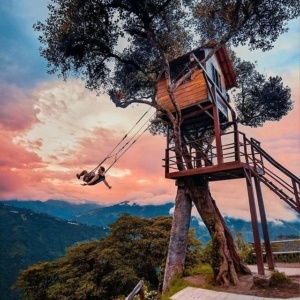
Day 4 – Banos
